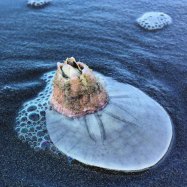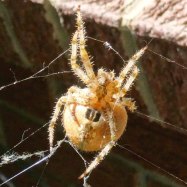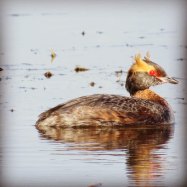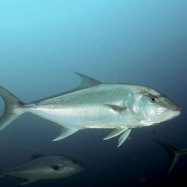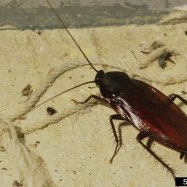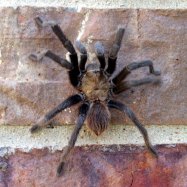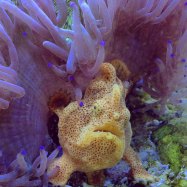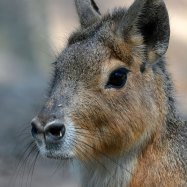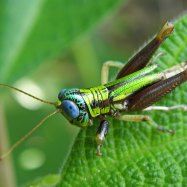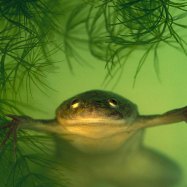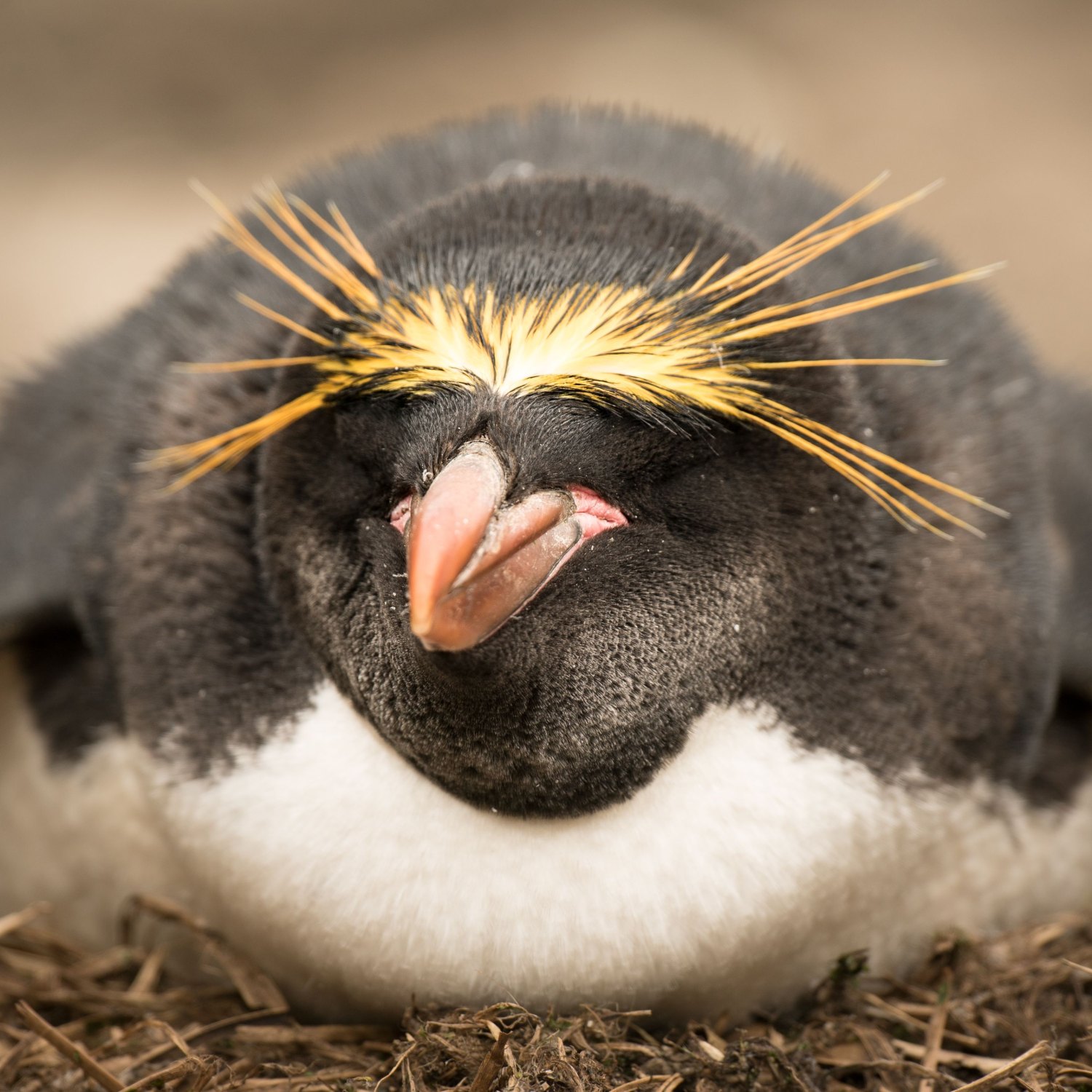
Macaroni Penguin
50-70 cm
Are you familiar with the Macaroni Penguin? This adorable animal, belonging to the Spheniscidae family, can be found in the Southern Hemisphere. With a slender and streamlined body, they can reach a length of 50-70 cm. Keep an eye out for these unique creatures on your next trip to the Southern Hemisphere! #MacaroniPenguin #Spheniscidae #AnimalFacts #SouthernHemisphere
Animal Details Summary:
Common Name: Macaroni Penguin
Kingdom: Animalia
Habitat: Marine
Discover the Macaroni Penguin: A Master of Adaptation in the Southern Seas
Nature never ceases to amaze us. With its endless array of species, each one unique in their own ways, exploring the animal kingdom is a never-ending adventure. Among these creatures, the Macaroni Penguin stands out for its striking appearance and fascinating behaviors. Found in the subantarctic and Antarctic regions, this charming creature is widely recognized for its bright yellow crest and comical waddling walk Macaroni Penguin. But there is so much more to this little seabird than meets the eye.The Macaroni Penguin, scientifically known as Eudyptes chrysolophus, belongs to the Spheniscidae family, making it a cousin to other penguin species such as the Emperor Penguin and the King Penguin. However, this feathery friend has adapted to its surroundings in a unique way, earning it the title of 'master of adaptation' in the southern seas. Let's dive into the world of the Macaroni Penguin and uncover its captivating features and secrets.
A Species of Many Names
Like many other animals, the Macaroni Penguin has different common names, such as Crested Penguin, Royal Penguin, and even Featherhead. But how did it come to be known as the Macaroni Penguin? Historically, the term 'macaroni' was used to refer to a fashionable man in the 18th century who would wear a feather in his cap as a symbol of his trendy and flamboyant style. When explorers first encountered the Macaroni Penguin in the 1700s, they were reminded of these fashionable men and their feathered headpieces, hence the name 'macaroni.'Today, this iconic seabird is recognized worldwide as the Macaroni Penguin and is famous not just for its yellow crest but also for its amusing antics.
A Member of the Penguin Family
The Macaroni Penguin is a member of the Spheniscidae family, which is made up of 18 adorable species of penguins Mandrill. These flightless birds have specialized adaptations that enable them to survive in harsh environments and thrive in their aquatic habitats. And the Macaroni Penguin is no exception.From their slick and waterproof feathers to their streamlined bodies, these birds are perfectly suited for a life in the Southern Hemisphere. They also have a layer of fat under their skin to keep them warm in the bitterly cold waters, and their large, webbed feet help them navigate through the ocean with ease.
But one of the most distinguishing features of the Macaroni Penguin is its striking coloration, making it stand out from its black-and-white counterparts. Let's take a closer look at this unique characteristic.
The Eye-Catching Colors of the Macaroni Penguin
The Macaroni Penguin sports a striking black-and-white color pattern, which helps it blend in with its surroundings to hide from potential predators. However, its most distinctive feature is the bright yellow crest that runs from the top of its head down to the back of its neck. This crest is made of thin, hair-like feathers and can stand upright, flop to one side, or even scrunch together in a punk-like hairstyle!But why does the Macaroni Penguin have this unique yellow crest? Some experts believe that it could be a way for penguins to recognize each other among large breeding colonies. Others think that it could play a role in mating rituals, with females being more attracted to males with longer, fuller crests. Whatever the reason may be, there's no doubt that this cute and quirky feature adds to the overall charm of the Macaroni Penguin.
Braving the Bitter Cold in the Southern Seas
The Southern Hemisphere is known for its harsh weather conditions, making it a challenging environment for animals to survive in. But the Macaroni Penguin has adapted to these freezing temperatures through various physical and behavioral adjustments. These adaptations have allowed them to be one of the most abundant penguin species in the world, with an estimated population of around 18 million individuals.One of the most notable adaptations of the Macaroni Penguin is its dense and oily feathers, which help it stay warm and dry in the water. These feathers are densely packed, making them waterproof, and also provide an insulating layer to trap air and retain body heat. Furthermore, the birds will often huddle together in large groups to conserve warmth, with temperatures reaching up to 37 degrees Celsius within the colony, despite the freezing temperatures outside.
A Carnivorous Diet
As with most penguin species, the Macaroni Penguin is a carnivore, meaning it feeds on other animals. These seabirds primarily feed on krill, a small crustacean often found in large swarms in the ocean. In fact, it is estimated that one Macaroni Penguin eats around 270 grams of krill per day, which is equivalent to its own body weight!However, they are opportunistic feeders and will also consume fish, squid, and crustaceans if krill is scarce. These birds have sharp and hooked bills, which they use to catch and hold on to their prey before swallowing it whole. They also have backward-facing spines in their mouths, which helps them hold onto and filter out the small, nutrient-rich krill from the seawater.
The Macaroni Penguin's Habitat and Geographical Distribution
As its name suggests, the Macaroni Penguin is found in the Antarctic and subantarctic regions, extending as far south as Antarctica and as far north as South America and South Africa. These seabirds often inhabit remote and isolated islands, preferring locations with steep, rocky slopes where they can easily build their nests and lay their eggs.Some common locations where you can find Macaroni Penguins include the Falkland Islands, Kerguelen Islands, and South Georgia Island. These birds are also known to breed in the coastal regions of southern Argentina, Chile, and southern Africa.
A Glimpse into the Life of a Macaroni Penguin
The life cycle of a Macaroni Penguin begins with finding a mate, which starts with an elaborate display of courtship. Males will don their brightest and fullest crests and parade around the colony, flapping their flippers and bowing their heads to attract a female's attention. Once a pair has been formed, they will work together to build a nest out of stones and pebbles to lay their eggs.Female penguins lay one to two eggs, either directly onto the ground or into the nest they have built. The parents will then take turns incubating the eggs, and once they hatch, they will feed and care for their chicks until they are old enough to fend for themselves. It takes about three and a half months for the chicks to mature, and within a few years, they will eventually start breeding and continuing the cycle.
The Importance of Conservation Efforts
While the Macaroni Penguin may seem abundant, with an estimated population of 18 million, it is still considered a vulnerable species. Climate change, overfishing, and pollution are some of the major threats to these seabirds, and their populations are declining in some areas.Conservation efforts are crucial to safeguard this species and ensure their survival in the future. Various organizations, such as the International Union for Conservation of Nature (IUCN), are actively working to protect their habitats and educate the public about the importance of preserving these beautiful birds.
The Macaroni Penguin: A Fascinating Creature of the Southern Seas
The Macaroni Penguin may have a comical and unique appearance, but there is so much more to this little seabird than meets the eye. From its striking yellow crest to its remarkable adaptations, the Macaroni Penguin has captivated scientists and animal lovers alike for centuries.As we continue to learn more about this fascinating species, it is essential to remember the importance of preserving their habitats and protecting their populations. And with continued conservation efforts, we can ensure that these charming birds will continue to thrive in the southern seas for generations to come.

Macaroni Penguin
Animal Details Macaroni Penguin - Scientific Name: Eudyptes chrysolophus
- Category: Animals M
- Scientific Name: Eudyptes chrysolophus
- Common Name: Macaroni Penguin
- Kingdom: Animalia
- Phylum: Chordata
- Class: Aves
- Order: Sphenisciformes
- Family: Spheniscidae
- Habitat: Marine
- Feeding Method: Carnivorous
- Geographical Distribution: Subantarctic and Antarctic regions
- Country of Origin: Multiple countries including South Georgia, Falkland Islands, and South Sandwich Islands
- Location: Southern Hemisphere
- Animal Coloration: Black and white with yellow crest
- Body Shape: Slender and streamlined
- Length: 50-70 cm
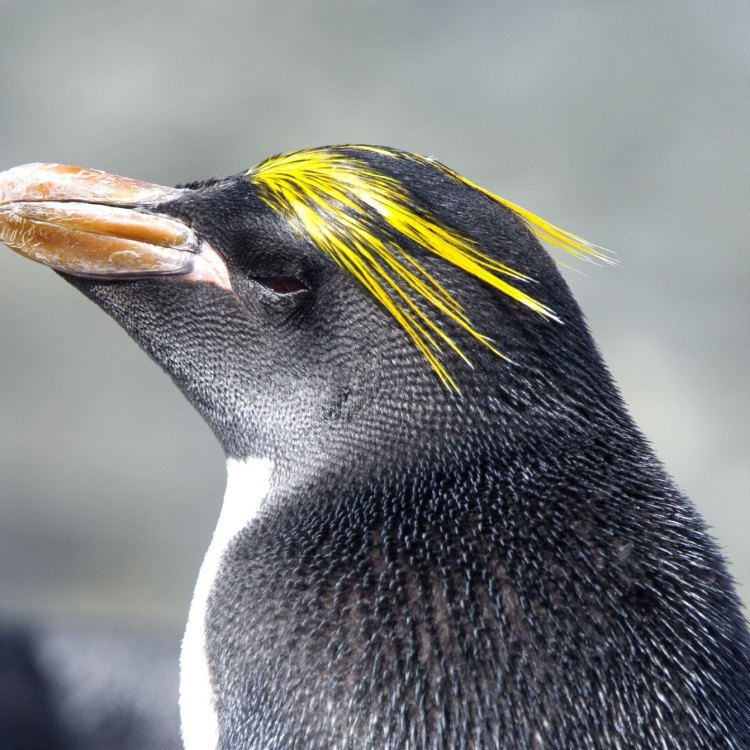
Macaroni Penguin
- Adult Size: Medium to large
- Average Lifespan: 10-20 years
- Reproduction: Sexual
- Reproductive Behavior: Monogamous
- Sound or Call: Loud, high-pitched braying
- Migration Pattern: Antarctic and sub-Antarctic islands
- Social Groups: Colonial
- Behavior: Highly social and gregarious
- Threats: Climate change, overfishing, pollution, and disturbance
- Conservation Status: Least Concern
- Impact on Ecosystem: Important prey species for marine predators
- Human Use: Tourism and scientific research
- Distinctive Features: Yellow crest and long, thin orange eyebrows
- Interesting Facts: Macaroni penguins get their name from the distinctive yellow crest feathers that resemble the feathered hats (called 'macaroni') worn by 18th-century men in England.
- Predator: Leopard seals, killer whales, and large seabirds
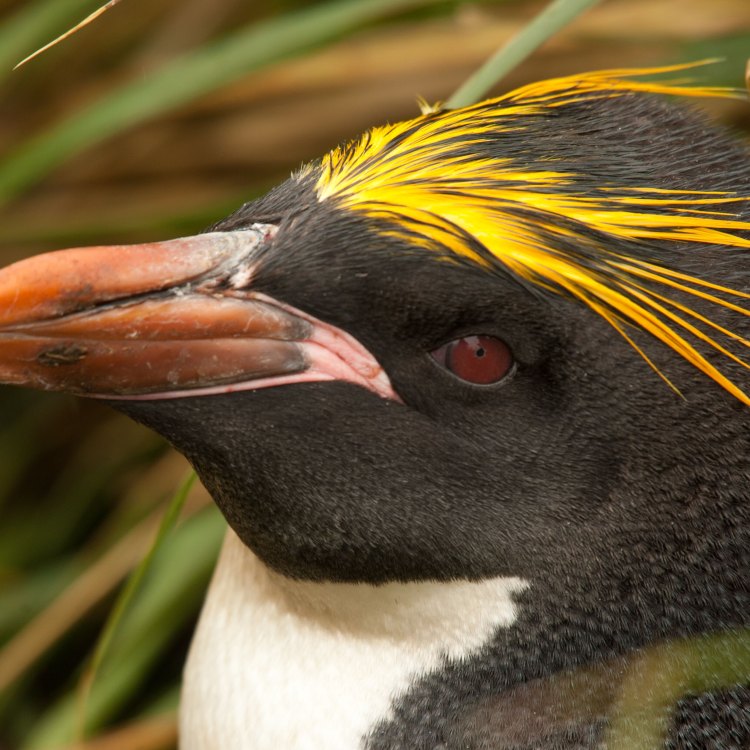
Eudyptes chrysolophus
The Fascinating Macaroni Penguin: A Social and Important Species of the Antarctic
When most people think of penguins, they often imagine the cute and cuddly creatures waddling through the snow in groups or sliding on their bellies. But there is one type of penguin that stands out from the rest, known for its distinctive features and interesting behavior - the Macaroni Penguin.Found in Antarctica and sub-Antarctic islands, the Macaroni Penguin is a highly social and gregarious species, with a striking yellow crest and long, thin orange eyebrows. With a medium to large adult size and an average lifespan of 10-20 years, these birds have captured the fascination of scientists and tourists alike PeaceOfAnimals.Com. In this article, we'll take a closer look at the unique features and behavior of the Macaroni Penguin, as well as its role in the ecosystem and human use.
The Unique Features of the Macaroni Penguin
One of the first things you'll notice about the Macaroni Penguin is its distinctive appearance. These birds stand out from other penguin species with their bright yellow crest and long, thin orange eyebrows. It's from this distinctive feature that they earned their name. 'Macaroni' was a term used in 18th-century England to describe an extravagant style of dress, including feathered hats, which the Macaroni Penguin's crest feathers resemble.In addition to their unique crest, Macaroni Penguins also have a black face, throat, and back, with white underparts. Their size ranges from medium to large, with an average height of 28 inches and weight of around 11 pounds. They also have a streamlined body and flippers, which allow them to navigate through the water with ease.
Breeding and Reproduction
Like other penguin species, Macaroni Penguins have a strict breeding season, which typically takes place from October to March Manatee. During this time, they gather in large colonial colonies, with some reaching up to 100,000 pairs of penguins. These colonies are often found on rocky headlands or steep cliffs, providing protection and shelter from predators.What sets Macaroni Penguins apart from other species is their monogamous reproductive behavior. These birds are known to mate for life and will return to the same colony to breed each year. Upon their return, they engage in a courtship ritual that involves loud, high-pitched braying calls and displays of their colorful feathers.
Once a pair has formed, the female will lay two eggs, which are then incubated by both parents for around 35 days. After hatching, the chicks will be fed regurgitated fish by their parents until they are old enough to fend for themselves. They'll then join juvenile colonies until they reach sexual maturity at around four years old.
Social Behavior and Threats
Macaroni Penguins are highly social and gregarious birds, often living in large colonies and forming close bonds with their mates. They are also known for their playful behavior, often engaging in activities such as sliding on their bellies, jumping in and out of the water, and chasing each other.However, despite their fun-loving nature, Macaroni Penguins face several threats, mostly due to human activities. Climate change is a significant concern, as it affects their sea ice habitat and decreases their food supply. Overfishing also poses a threat, as it reduces the population of their primary prey species - krill and small fish.
Pollution and disturbance from human activities, such as oil spills and tourism, can also have a negative impact on Macaroni Penguins. As a result, their conservation status is listed as Least Concern by the International Union for Conservation of Nature (IUCN), but there is a growing concern for their future.
The Role of Macaroni Penguins in the Ecosystem
As with all species, the Macaroni Penguin plays an important role in the Antarctic ecosystem. These birds are a vital prey species for marine predators, including leopard seals, killer whales, and large seabirds. They help to maintain balance in the food chain and contribute to nutrient cycling in their environment.However, their population decline due to human threats can have a significant impact, not only on other species but also on the health of the entire ecosystem. It's essential for conservation efforts to continue to protect the Macaroni Penguin and its habitat to ensure the overall well-being of the Antarctic ecosystem.
Human Use and Impact on Macaroni Penguins
Aside from their importance in the ecosystem, Macaroni Penguins also have cultural and economic value for humans. They are a popular tourist attraction, with many people traveling to Antarctica to see these fascinating birds in their natural habitat. This tourism provides jobs and income for local communities and helps to contribute to conservation efforts.Macaroni Penguins are also studied by scientists to better understand their behavior, migratory patterns, and the impact of human activities on their population. This information is vital in shaping conservation and management strategies to protect these birds' future.
In Conclusion
The Macaroni Penguin is a truly unique and fascinating species of bird, with its distinctive features, monogamous reproductive behavior, and social nature. But like many animal species, it faces threats from human activities, putting its future at risk. As a crucial prey species and a significant contributor to the Antarctic ecosystem, it's essential to continue our efforts to conserve and protect the Macaroni Penguin and its habitat.From their lively calls and playful behavior to their striking appearance, there's no doubt that Macaroni Penguins are a significant and important part of the Antarctic environment. Let us all do our part to ensure that these birds can continue to thrive and enchant us for generations to come.
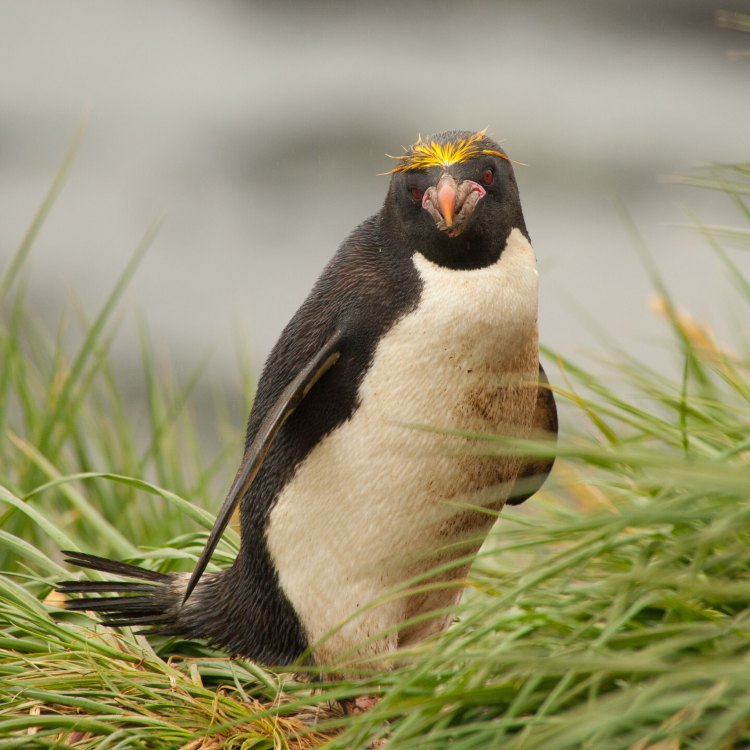
Discover the Macaroni Penguin: A Master of Adaptation in the Southern Seas
Disclaimer: The content provided is for informational purposes only. We cannot guarantee the accuracy of the information on this page 100%. All information provided here may change without prior notice.

